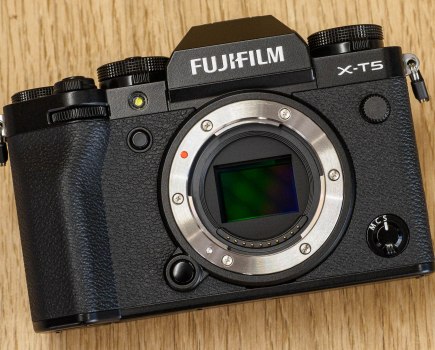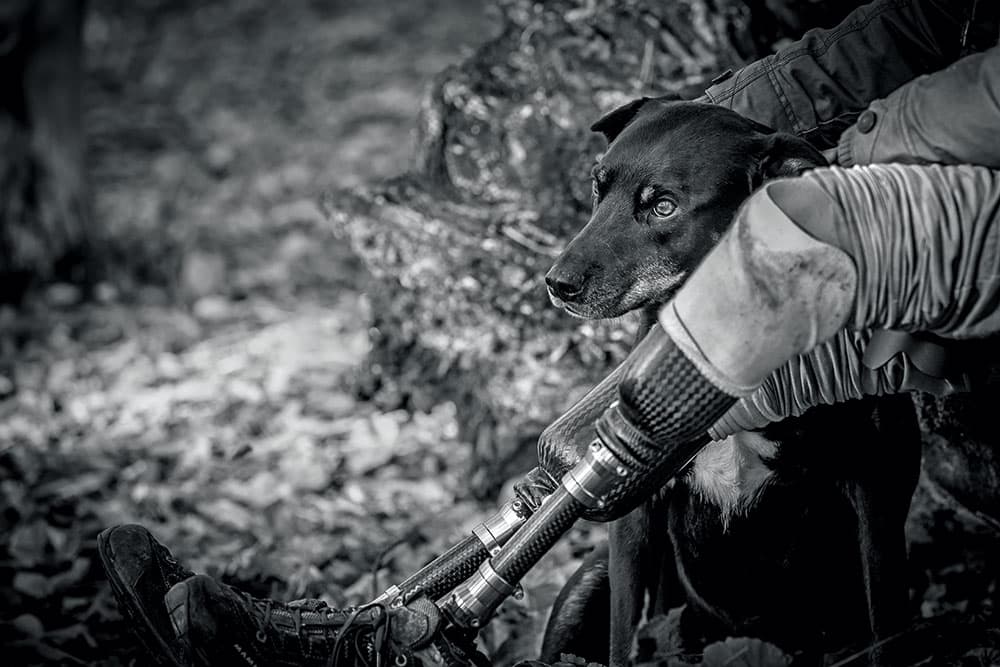
Credit: John Ferrett
Hollie Latham Hucker, Technique editor
‘Always by my side’ by John Ferrett
I’m a huge fan of the array of fantastic photography competitions we see each year – big and small. It’s great to see so many photographers from different backgrounds participating from all corners of the globe. We’ve seen some stunning photographs in 2017; it’s hard to pick a favourite. However I must admit that I have a soft spot for any photograph that includes a dog – it won’t take much to win me over! So this year I was particularly excited to see the finalists for The Kennel Club’s Dog Photographer of the Year. Now in its 12th year, the international competition received almost 10,000 entries from 74 countries. It must have been a hard task for the judges to whittle it down to the 10 winners of each category. The image I picked was second place in the Assistance Dogs category. Taken by John Ferrett, it shows Reno, a Labrador Doberman cross, whose owner is a double amputee and registered blind.
This image really struck a chord with me. It shows the close, emotional companionship between Reno, a rescue dog, and his owner, who trained Reno to assist him in everyday life. John has captured the beautiful bond between them, one that pulls at my heartstrings. It’s clear to see from this photo that Reno rarely leaves his owner’s side. This image truly represents the special relationship we all have with these loyal, loving and reliable animals. To see more of John’s work, visit www.jferrettphotography.com.

Credit: Franco Banfi
Nigel Atherton, Editor
‘Sleeping sperm whales’ by Franco Banfi
In these image-saturated times I love it when a photo stops me in my tracks and makes me go ‘Wow!’ especially when it shows me something I haven’t seen before. Several images this year did that for me. Ami Vitale’s surreal panda shot and Yuri Zvezdny’s Patagonian landscape, both featured here, did just that, as did Brent Stirton’s moving portrait of an injured, orphaned baby rhino being cuddled by a charity worker. But my mind keeps returning to this astonishing photo by Swiss photographer Franco Banfi, taken on a Canon EOS 1D X Mark II with an 8-15mm fisheye lens. I’ve never given much thought to whether or how sperm whales sleep, but if forced to guess I wouldn’t have pictured these wonderful creatures floating like tombstones, or some cetacean Stonehenge.
Franco took this photo back in January off the coast of Dominica in the West Indies, an area I know well. I spent many years in the Caribbean and learned to dive there, but I never saw anything like this! He and his crew were following a single whale when it led them to this pod. Then other whales joined them. ‘Suddenly they all stopped swimming and started to sleep vertically in the water,’ he recalled in our 30 September issue. I like how Franco included a couple of fellow divers for scale, and to convey how undisturbed in their slumbers they are by the nosy human interlopers. I wonder what sperm whales dream about?
Continues below…
[collection name=”small”]
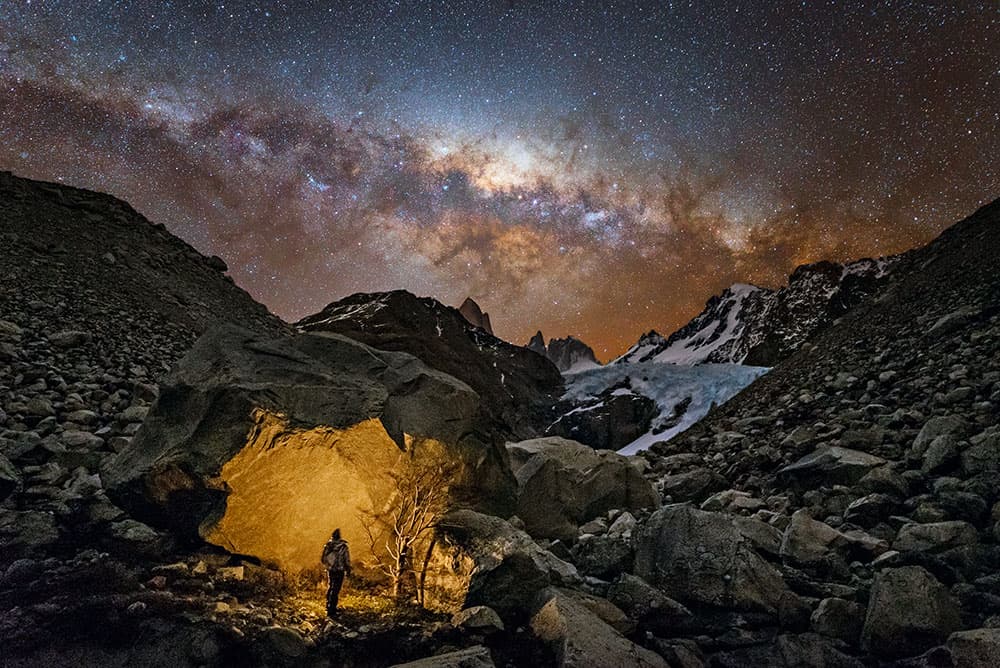
Credit: Yuri Zvezdny
Andy Westlake, Technical editor
‘Wanderer in Patagonia’ by Yuri Zvezdny
While the Insight Astronomy Photographer of the Year competition tends to be a showcase for truly astonishing imagery, a lot of it feels remote. No matter how beautiful they may be, false-colour images of distant nebulae shot through a telescope can feel divorced from reality.
This is what makes Yuri’s shot, which won the People and Space category, stand out. We see the majesty of the Milky Way above a glacial landscape of rugged grandeur, with a solitary human observer gazing upwards. Somehow, even committed city dwellers who’d think twice about popping out after dark for a pint of milk feel a connection, as if we know what it’s like to stand there.
This is also a work of phenomenal technical virtuosity. Balancing the illumination in all the areas of the frame – the sky, the mountains, and the artificial pool of light surrounding the figure – must have taken a huge amount of planning at the taking stage, as well as a great deal of skill in the post-processing. It’s all paid off though, resulting in a truly awesome photograph on a galactic scale.

Credit: Ami Vitale
Michael Topham, Reviews editor
‘Pandas Gone Wild’ by Ami Vitale
This image, captured by second prize stories winner Ami Vitale, in the Nature category of this year’s World Press Photo Contest, stopped me in my tracks. As I learned more about it, I discovered it’s one image from a series of heart-warming shots taken by Ami during a visit to China to document the once-endangered giant panda.
The striking image depicts a cub of a giant panda that lives at the Wolong reserve, Sichuan, China, being released back into the wild by a local keeper who wears a panda suit in the hope of keeping young panda bears as free as possible from human contact and intervention. What I love about the image is the sense of care and trust it portrays between cub and keeper.
From a technical perspective, I’m particularly fond of Ami’s documentary style, which is all about capturing the moment and telling the story as it is, rather than getting creative with depth of field or experimenting with unusual techniques. I highly recommend anyone with an interest in documentary photography to check out this year’s World Press Photo Contest winners.
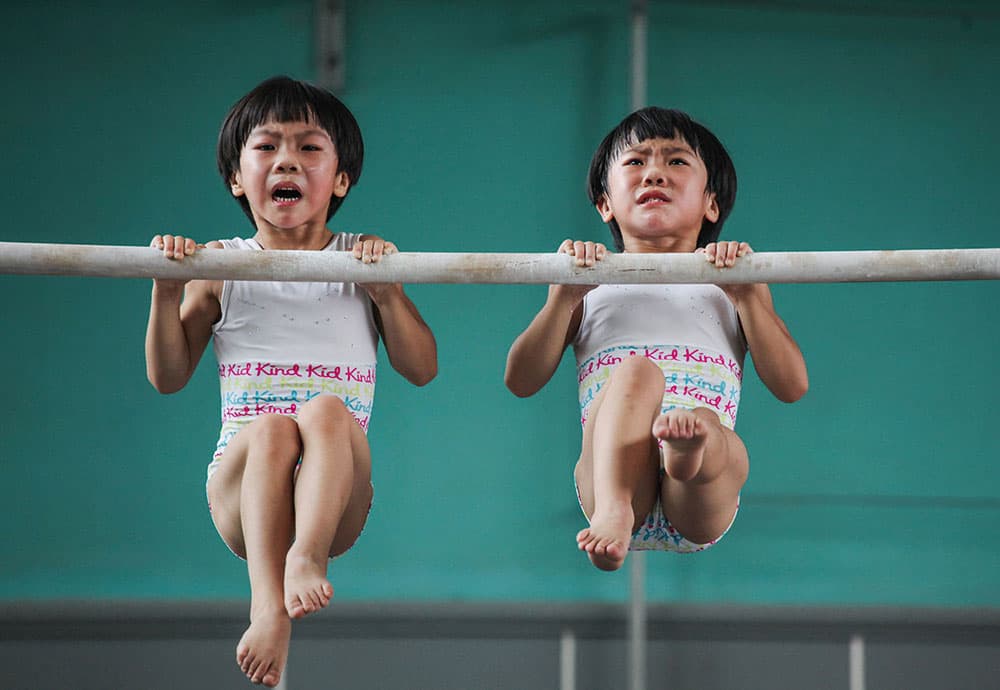
Credit: Yuan Peng
Geoff Harris, Deputy editor
‘The twins’ gymnastics dream’ by Yuan Peng
Working on AP means I get paid to look at fantastic photography, so choosing my favourite picture of the year was a tough call. When I think back to this year’s entries to the Sony Photography Awards, however, I remember how gobsmacked I was by the images of the young Chinese gymnasts – Liu Bingqing and Liu Yujie – taken by Yuan Peng.
The images won top prize in the Sports category, and were taken in a specialist school in Jining, in the predominantly rural Shandong province in China. Yuan’s subject is the punishing training regime of twin sisters Liu Bingqing and Liu Yujie. While his photographs of their gruelling training sessions would probably prompt calls to social services in the UK, the twins have loved gymnastics since being tots and are following their dream of representing an increasingly dominant China on the world stage.
Stuck-up fine art photography critics are sniffy about sports imagery, but I find it a fascinating genre. It is filled with energy, drama and spur-of-the-moment creativity.
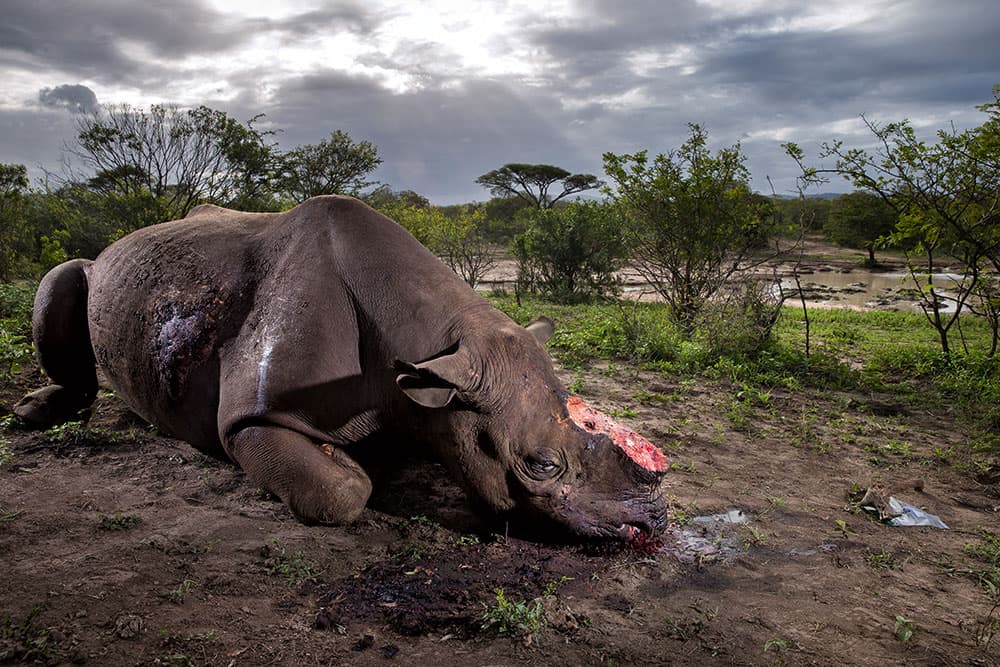
Credit: Brent Stirton
Steve Fairclough, Features consultant/writer
‘Memorial to a Species’ by Brent Stirton
By now I would imagine the majority of AP readers are quite familiar with the tragic image of a de-horned black rhino, which secured the 2017 Wildlife Photographer of the Year title for Brent Stirton. Since it was chosen I’ve followed some of the debates about it on social media, with many detractors claiming it was easy to take such a picture, but I think they’re totally missing the point.
It’s about having a debate and highlighting key conservation issues in the world – it’s not about which camera was used or what f-stop or shutter speeds were set or, indeed, how difficult or easy a picture was to take. It’s about leveraging the power of still photography to bring about change in the world. Imagine if Brent Stirton had just filmed this poor rhino. Would that have had as much of an impact? Quite simply, no. So that’s why, for me, this is a superb example of the impact of a single image. It combines a sort of haunting truth with a clear message that this crime must stop.
As an aside, I believe it’s long overdue for Brent Stirton to win such a high-profile award. His iconic image of a murdered silverback mountain gorilla being carried on a stretcher out of Virunga National Park in the Democratic Republic of Congo, should have been World Press Photo of the Year in 2008. It was passionately argued for by the then-judge Michael ‘Nick’ Nichols until the wee hours of the morning when a fellow World Press Photo jury member, who was very tired, said: ‘It’s only a monkey, Nick’. Until we can unilaterally change these attitudes, images like this one of the de-horned rhino need to remain firmly embedded in our minds. Visit www.brentstirton.com.
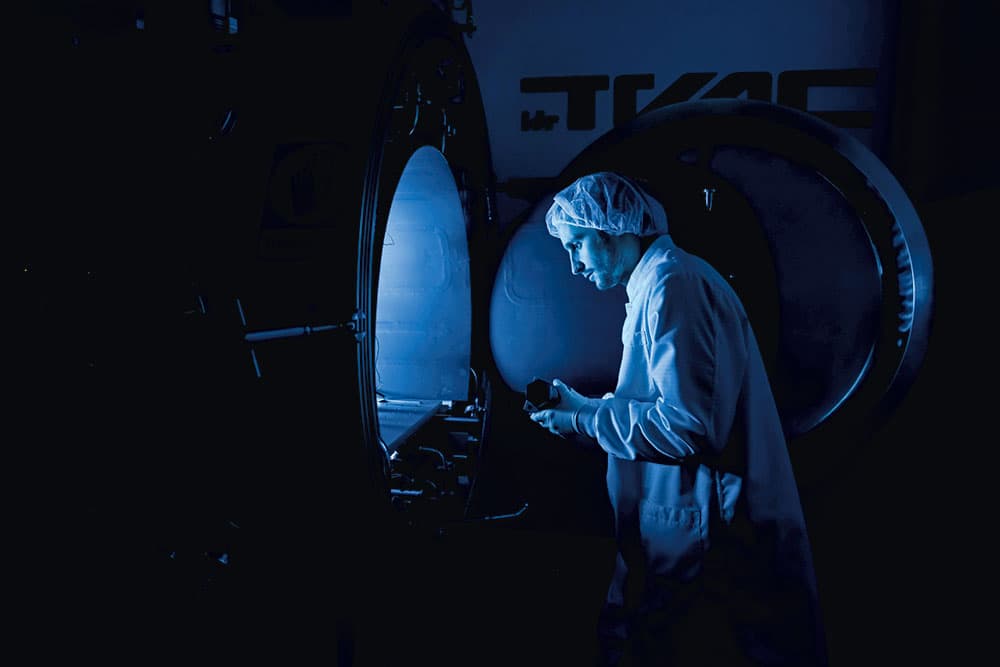
Credit: Santiago Villamediana
Andrew Sydenham, Studio manager
‘Thermal Vacuum Chamber’ by Santiago Villamediana
The Design and Production Winner of the Institute of Engineering and Technology (IET) photography competition, which ran in conjunction with Amateur Photographer, really caught my eye. The ethereal light emanating from this scientific chamber, bathes the operator and his lab coat in such a classic way that a Renaissance master could hardly have painted it more exquisitely. I’m very impressed by this image, which in its scope could simply have ended up as a well-executed industrial documentary shot. But careful thought and execution quite apart from judicious use of a blue gel have lifted it into the realms of the sublime. I’m sure jobbing photographers regularly find themselves confronted with similar subjects that, captured in a standard way, become nothing out of the ordinary. The creative thought and artistry are the commodities which make this shine out from the thousands of images that confront me every year.
More of Santiago’s imagery can be found on his website along with lovely portfolios from rural Tanzania and his portraits of African women, very different in style to this award-winning image. Check out the images at: www.santiagovillamediana.com.
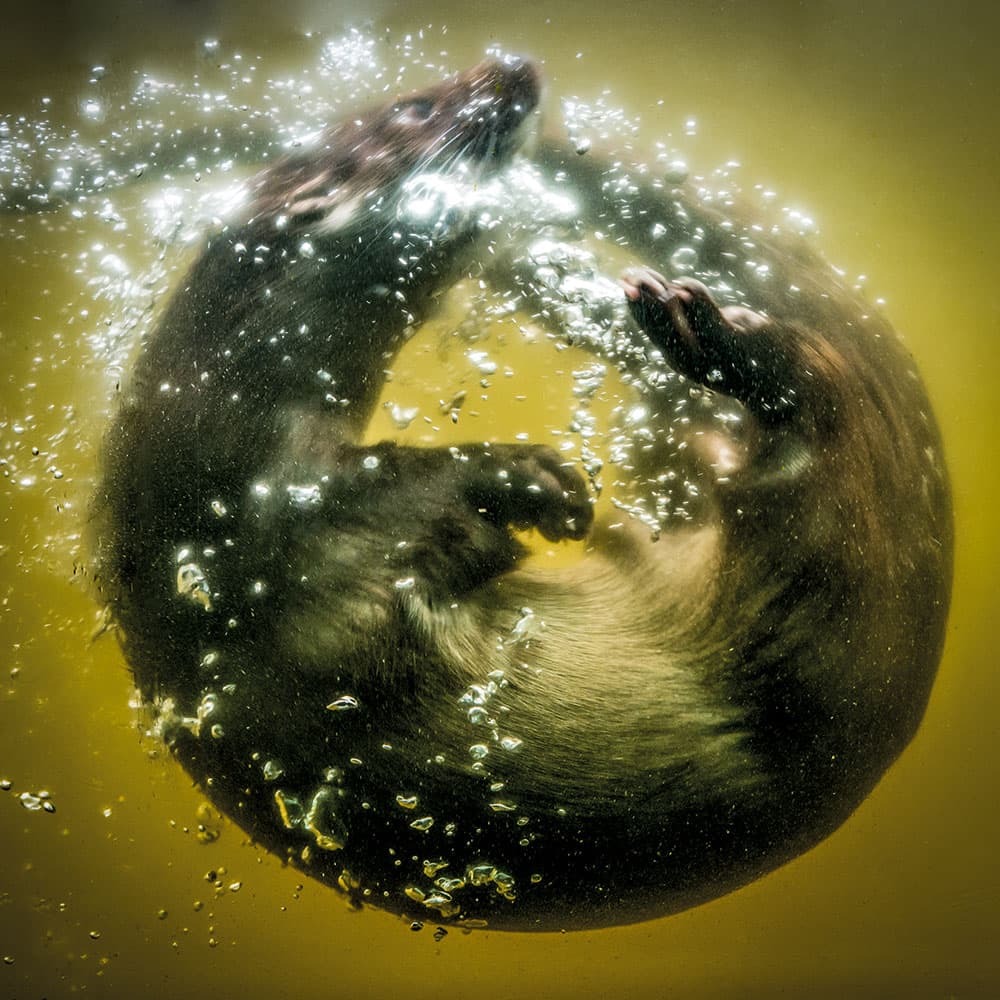
Caption: Robin Goodlad
Tracy Calder, Features editor
‘A Ring in Bright Water’ by Robin Goodlad
A few years ago I was lucky enough to stay on the island of Eilean Bàn, Scotland, in the former home of Gavin Maxwell, author of Ring of Bright Water. One morning, having risen early, I made my way towards the edge of the island armed with a tripod and a plan to shoot the lighthouse and bridge. Suddenly, offshore, the unmistakable form of an otter appeared. I stood for 10 minutes watching as the animal frolicked in the water, completely disinterested in me. I decided not to take a picture, knowing that my efforts would pale compared to the experience of observing the animal. I did get my shot of the lighthouse and bridge, but it is the former encounter that stays with me.
Seeing this fabulous picture by Robin Goodlad, who is primarily a wedding photographer, really brought back memories of my time on the island. The picture was Highly Commended in this year’s British Wildlife Photography Awards, and rightly so.
The image was taken through a viewing window at an otter sanctuary in Devon – proving that you don’t always need to get your feet wet to produce a striking underwater image. Robin is fascinated by otters and inspired by Maxwell, and he recalls that the animal took delight in performing perfect wheels in front of the window, leaving a trail of bubbles behind. Pure magic!







